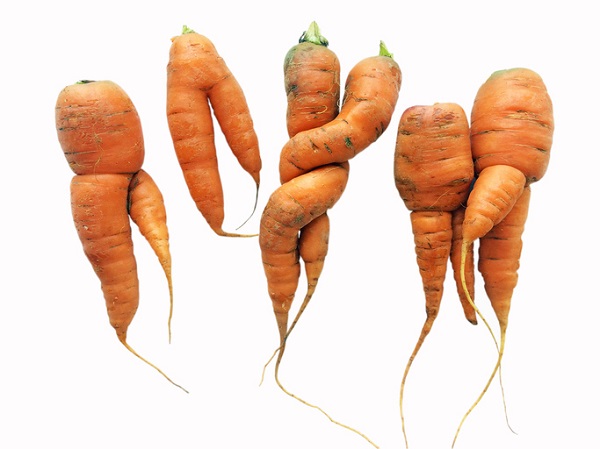
Many modern food trends can range from fascinating to head-scratching, and “ugly produce” can fall into either category depending on your point of view. For those unfamiliar, the “ugly produce” trend is the sale of imperfect-looking produce; that is, produce that may be undersized, the wrong colour, or blemished in some way. Supermarkets have seen this trend as a sales opportunity, with large chains like Whole Foods and Walmart selling them at a discount in recent years as opposed to discarding them.
But what should we be aware of when wondering what to do with our scarred potatoes, twisted carrots, and disfigured fruits? Here are four things to know about this intriguing trend if you’re studying food technology.
1. It’s Done with the Intent of Preventing Food Waste
“Ugly produce” is discarded for reasons that seem rather superficial, and food is generally wasted far too often regardless of appearance. According to the United States Department of Agriculture, about 31 per cent of the country’s food supply (about 430 billion pounds!) isn’t even eaten—and that’s not even including how much gets discarded before hitting supermarket shelves. Experts also estimate that, as of April 2018, about 150,000 tons of food is wasted daily in the United States—roughly a pound per person. Ironically, their research also indicates that those with the healthiest diets—in other words, diets rich in fruits and vegetables—are the most wasteful with produce.

By limiting how much produce goes to waste, the “ugly produce” craze has some environmental benefits
2. The Ugly Produce Trend Can Help Fight Climate Change
This trend has caught on not simply for its capacity to reduce food waste, but for its supposed positive environmental effects. According to experts, all this wasted food takes up the yearly use of:
- 4.2 trillion gallons of irrigated water
- 780 million pounds of pesticides
- 30 million acres of land
- Close to 2 billion pounds of fertilizer
In this way, the ugly produce trend can help reduce the waste of other valuable resources like water and land. It can therefore be a powerful tool for addressing climate change.

At AAPS, you’ll learn about food product development, food chemistry, and food processing
3. Ugly Produce Startups Are Big Business—and Investors Are Paying Attention
Those interested in food quality assurance may be wondering how the food industry can tackle this significant problem. Fortunately, there’s a lot that aspiring professionals can do. “Ugly produce” often gets turned into processed foods, such as ice cream, salsa, and sauce. A certain amount can also be processed into products like juices—and companies like the Montreal-based LOOP have embraced this by using discarded produce and making cold-pressed juices. As a result, they’ve saved:
- 1.2 million kg of fruits and vegetables
- 828 million litres of water
- Almost 1 million kg of greenhouse gas emissions
For companies looking to appeal to eco-conscious consumers, using ugly produce as an ingredient could be an excellent idea.

Some companies are putting ugly produce to great use, such as making them into cold-pressed juices
4. Students of Food Quality Assurance Might Know There Are Some Concerns to Note
Of course, there are important food quality control considerations to keep in mind when working with ugly produce. As much as unappealingly-shaped produce is being repurposed, this is not to say that the approach is necessarily controversy-free.
In an article written for the Washington Post, crop scientist Dr. Sarah Taber says that much of the produce that doesn’t leave the farm stays there not for aesthetic reasons, but because the bruised nature of the produce can cause the entire crate to rot. In addition, by poking holes and knocking against other food in the crate, it can endanger everything inside while in transit. For companies that choose to use ugly produce, overcoming these challenges will be important.
Are you interested in taking food technology courses?
Contact AAPS and learn about our various programs!



